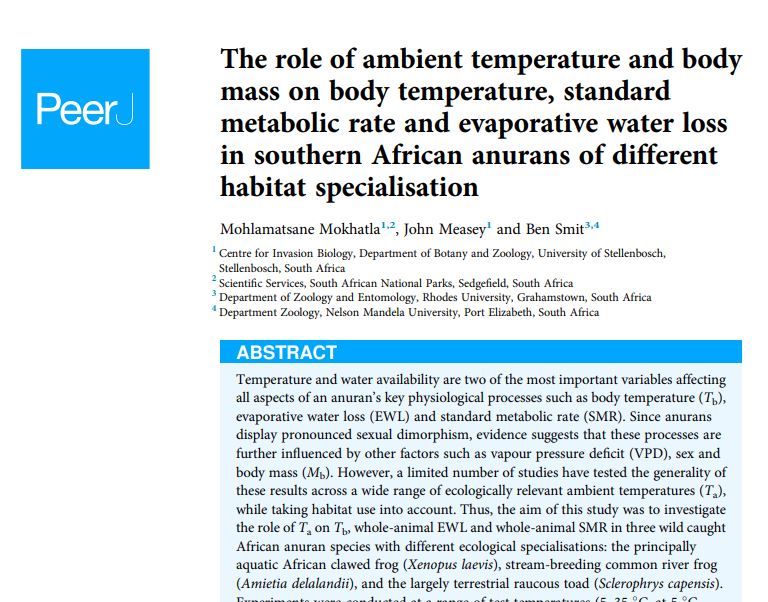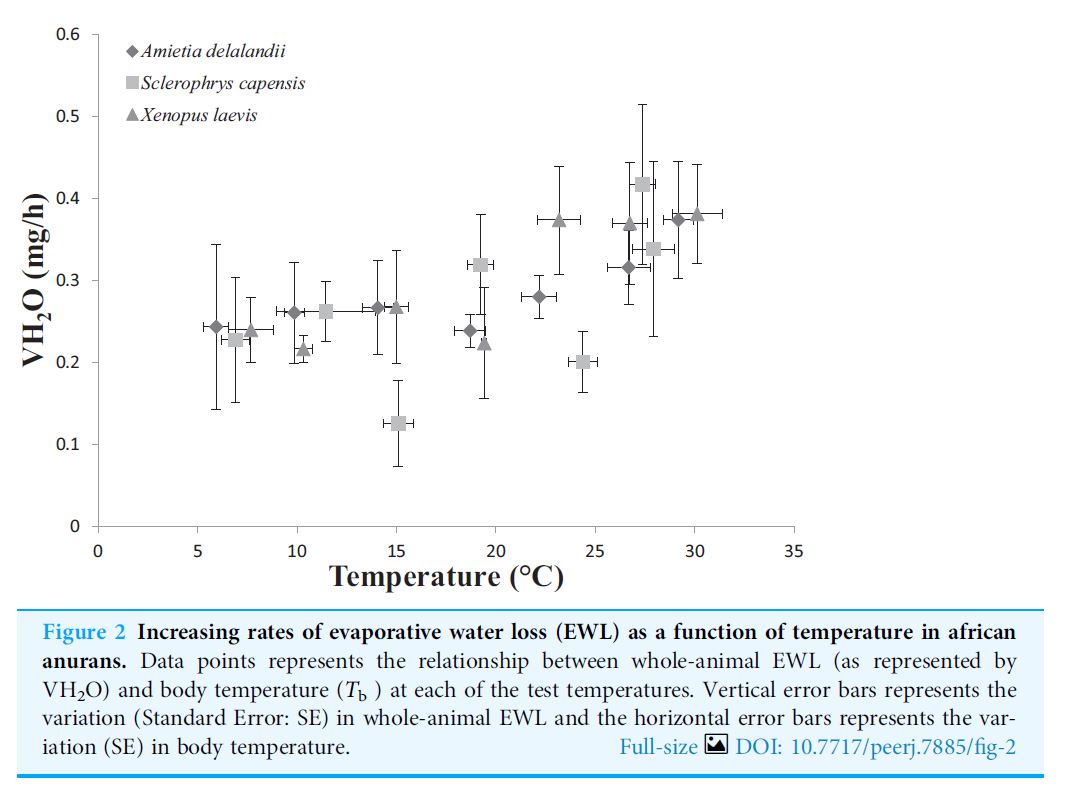Effects of temperature on the physiology of three African frogs
Some of you will remember Mohlamatsane ‘Mac’ Mokhatla and his work on three species of widespread African frogs: the principally aquatic African clawed frog (Xenopus laevis), stream-breeding common river frog (Amietia delalandii), and the largely terrestrial raucous toad (Sclerophrys capensis). Keen readers will remember that one of Mac’s species changed its name three times during the course of his PhD (see here)! Well, some of that work was immortalised today in a paper summarising the physiology work that Mac did on these three frogs.
While there’s been quite a lot of work done on the physiology of frogs, most of these studies are done in the northern hemisphere on temperate frogs with similar biologies. Mac chose three very different species: platannas that spend most of their time in water, toads that are mostly terrestrial, and river frogs that spend much of their time jumping from land to water and back.
The results suggest that vapour pressure deficit (an important trait for frogs that need to remain hydrated) better predicted rates of evaporative water loss than ambient temperature in toads and river frogs.
Read more about Mac's thesis here or read more the paper here:
Mokhatla M, Measey J, Smit B.2019.The role of ambient temperature and body mass on body temperature, standard metabolic rate and evaporative water loss in southern African anurans of different habitat specialisation.PeerJ7:e7885https://doi.org/10.7717/peerj.7885


